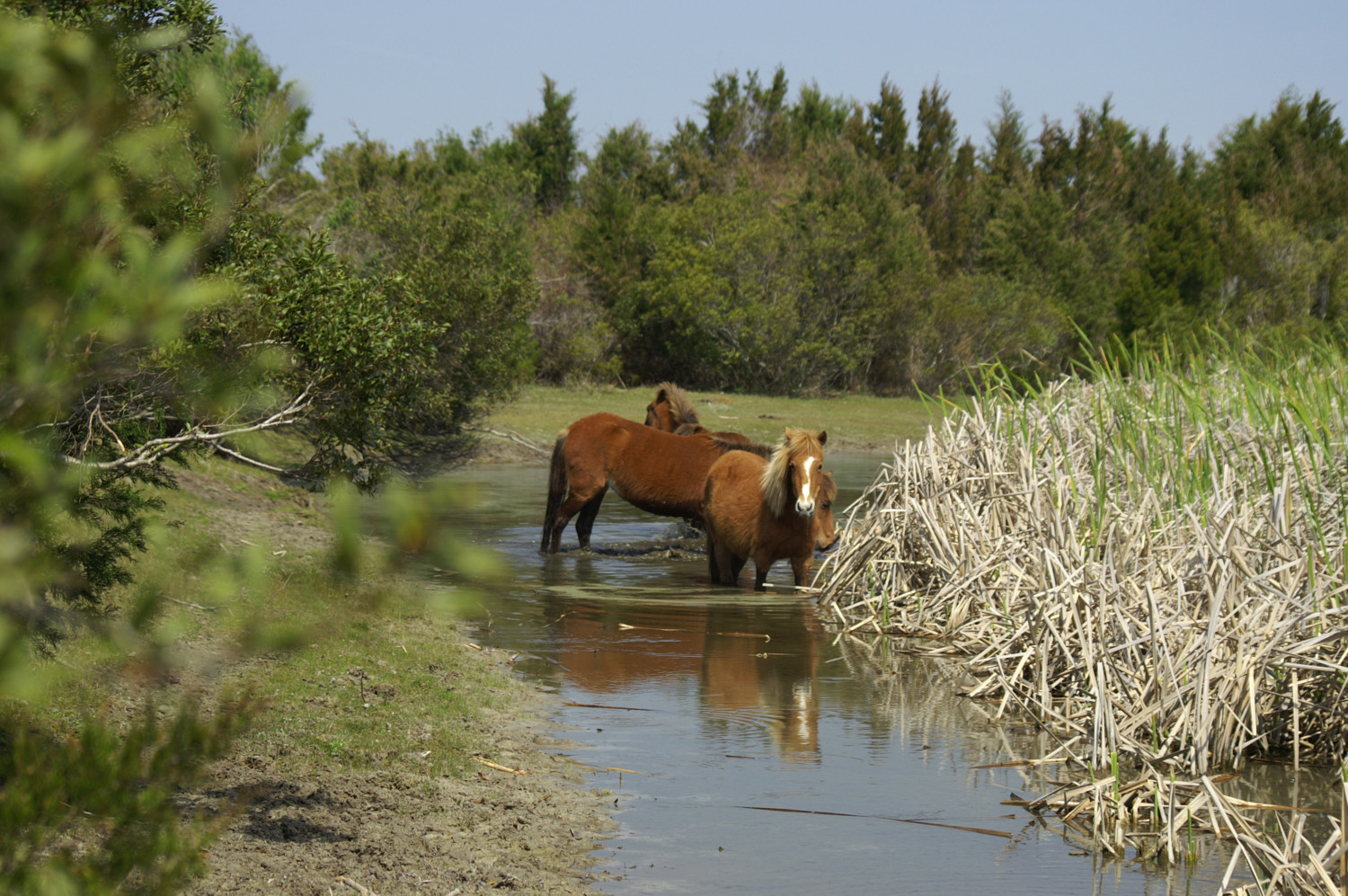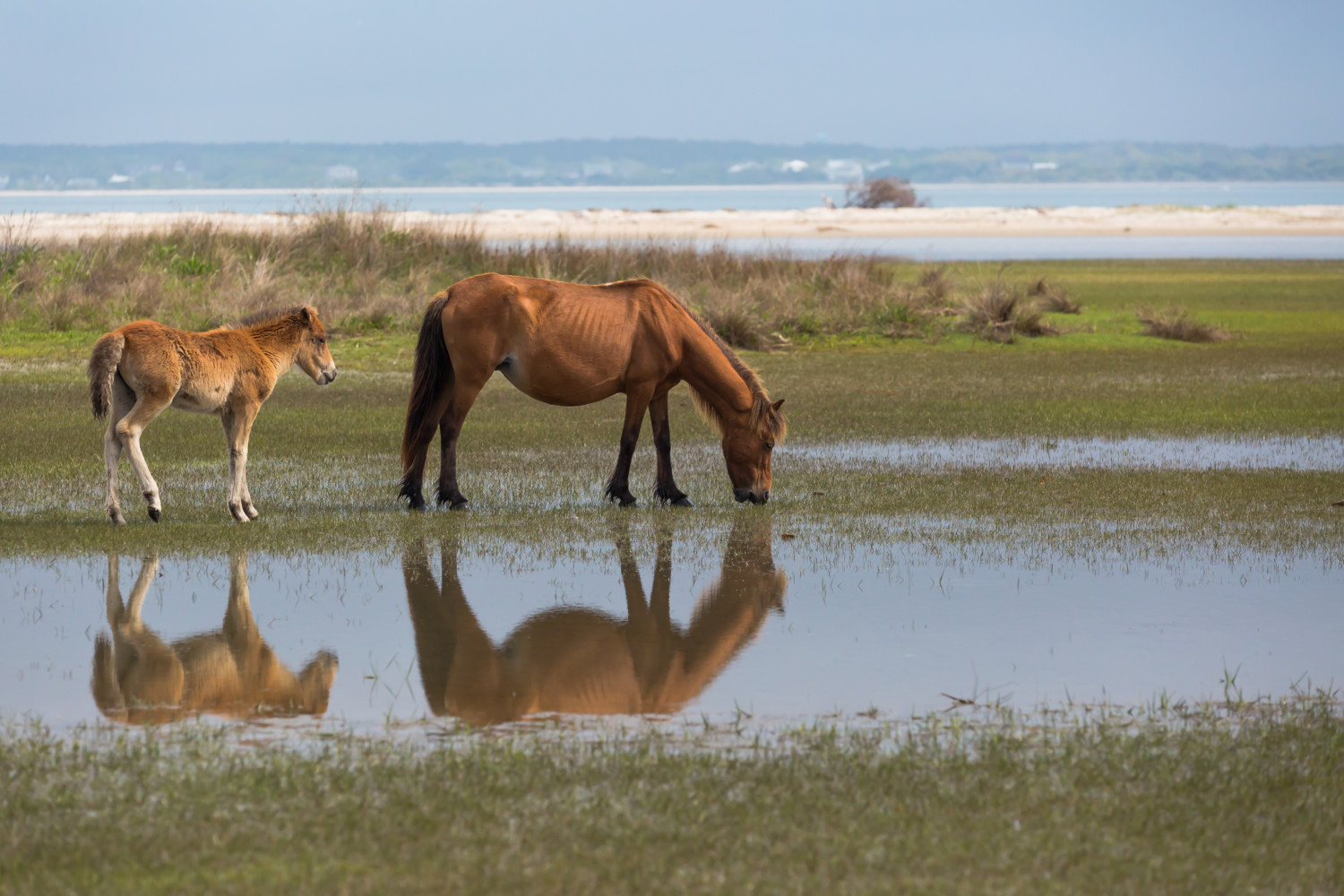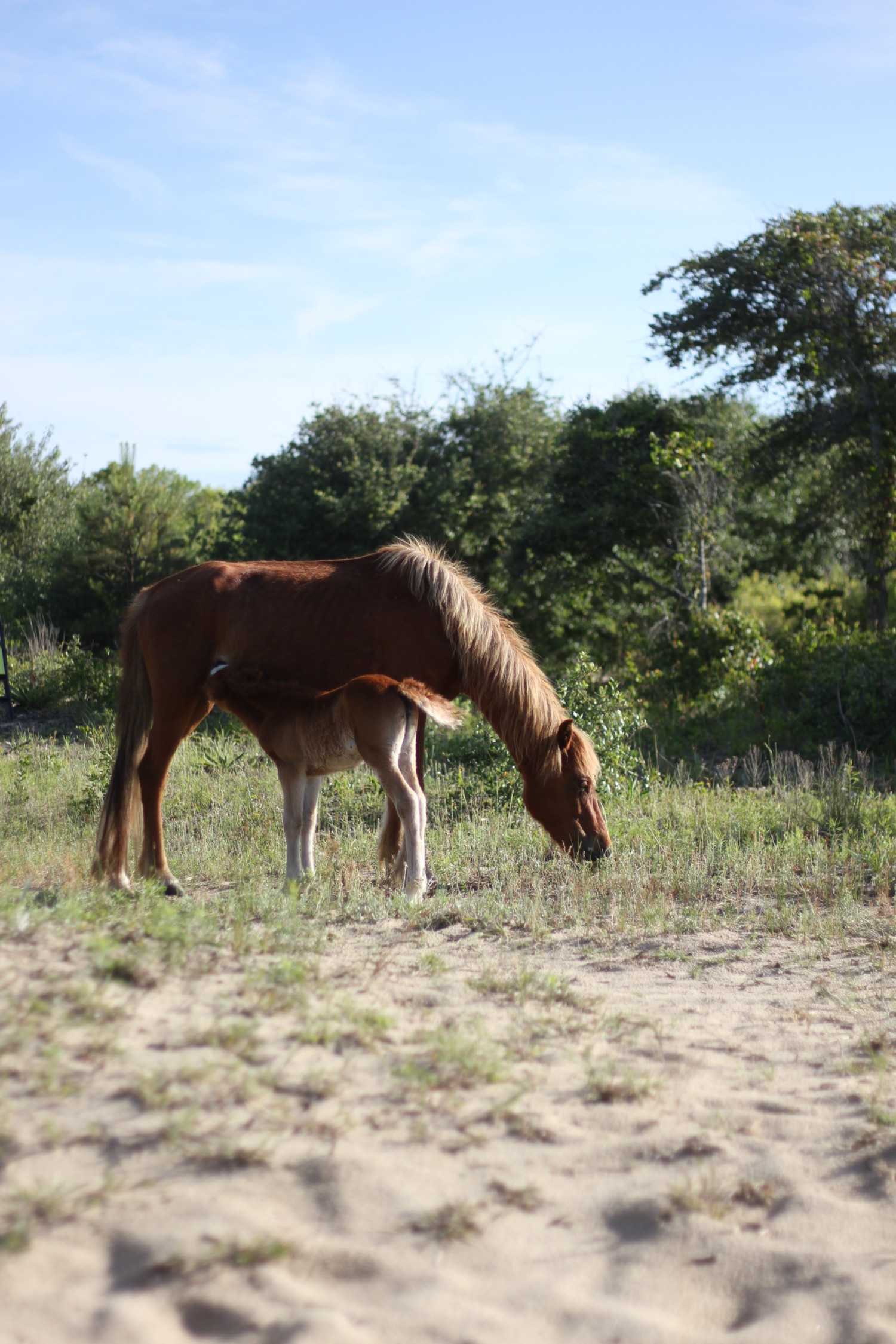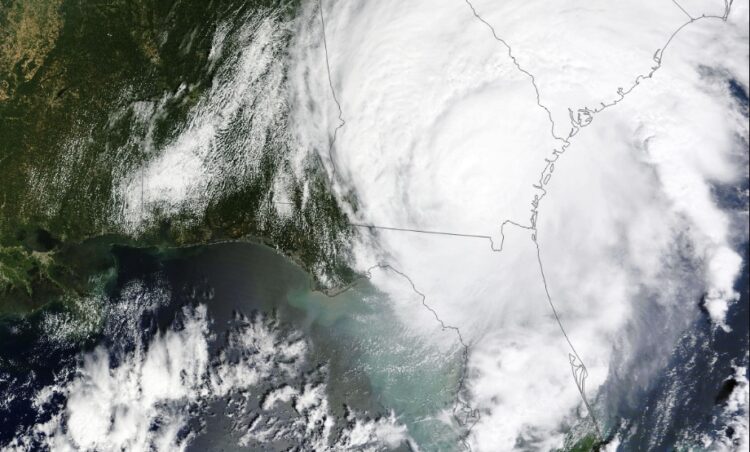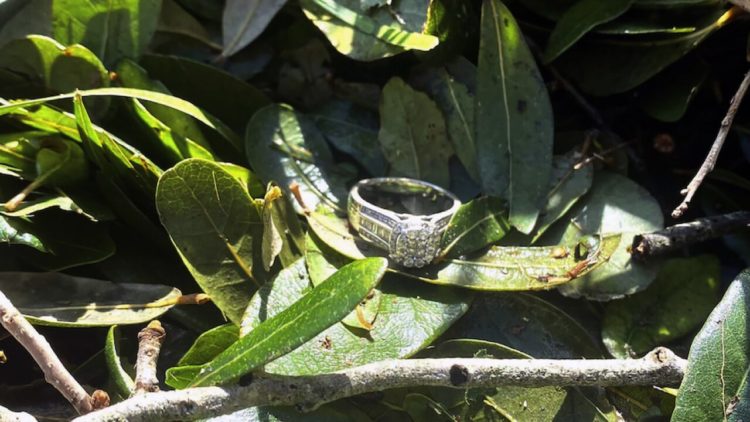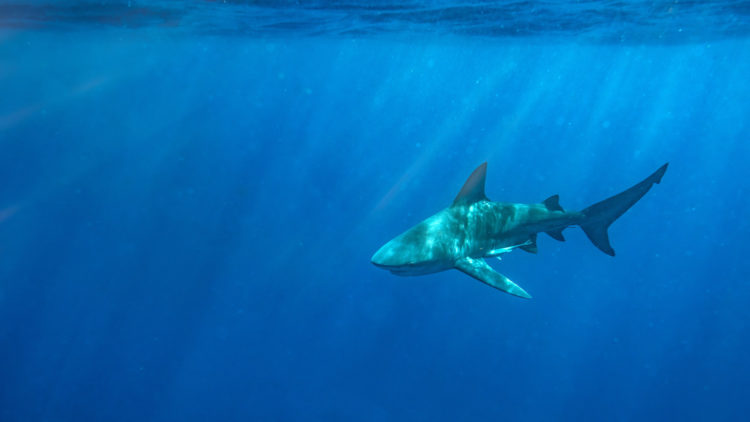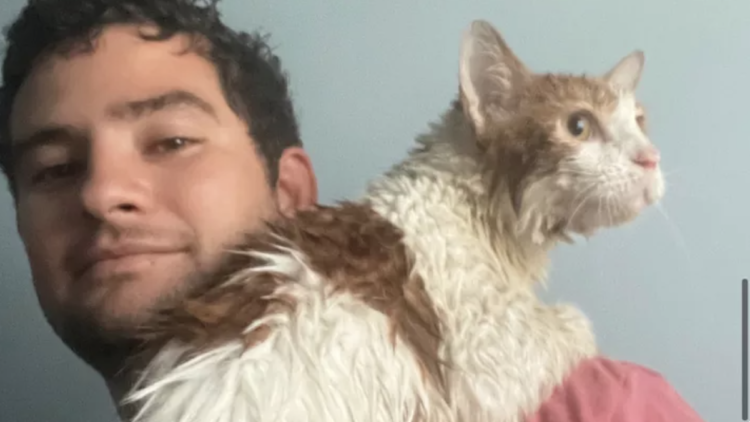How North Carolina’s wild horses have survived hurricanes for over 500 years
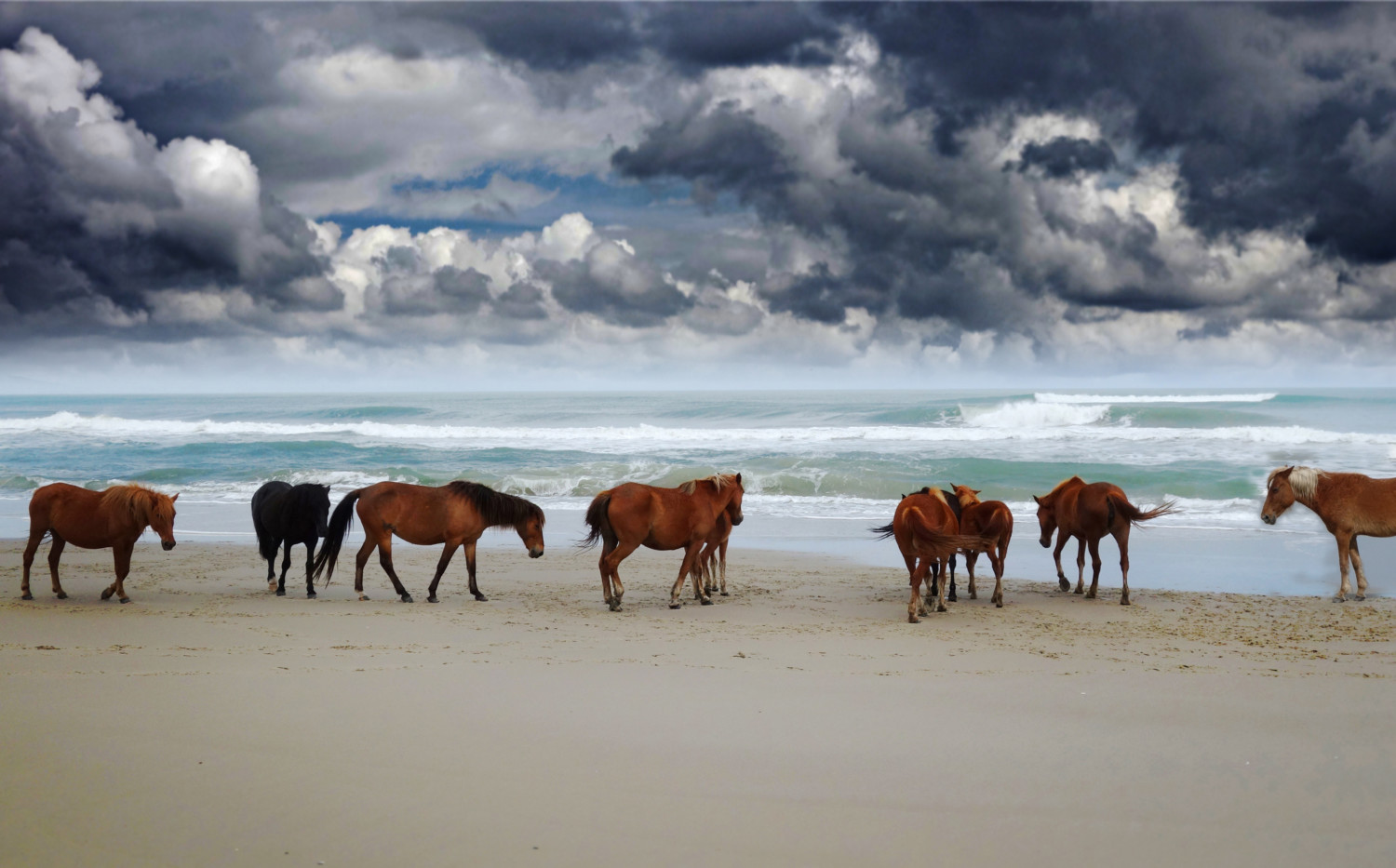
A bunch of majestic horses that spend their days frolicking on the beach in North Carolina’s Outer Banks were not evacuated as Hurricane Dorian approached.
With Hurricane Dorian quickly approaching, the colonial Spanish mustangs huddled together and rode out the storm using a trick horses have used for centuries.
The horses move to higher ground and gather under sturdy oak trees to shelter from the storm, said the Corolla Wild Horse Fund, which manages the herd. “They’ll likely ride out winds and rain as their ancestors did before them — in huddles, butts to the wind,” a message sent before the storm read.
And unlike human beings living in the Outer Banks, the wild horses are better equipped to handle a hurricane. They start to group together when they feel a change in pressure.
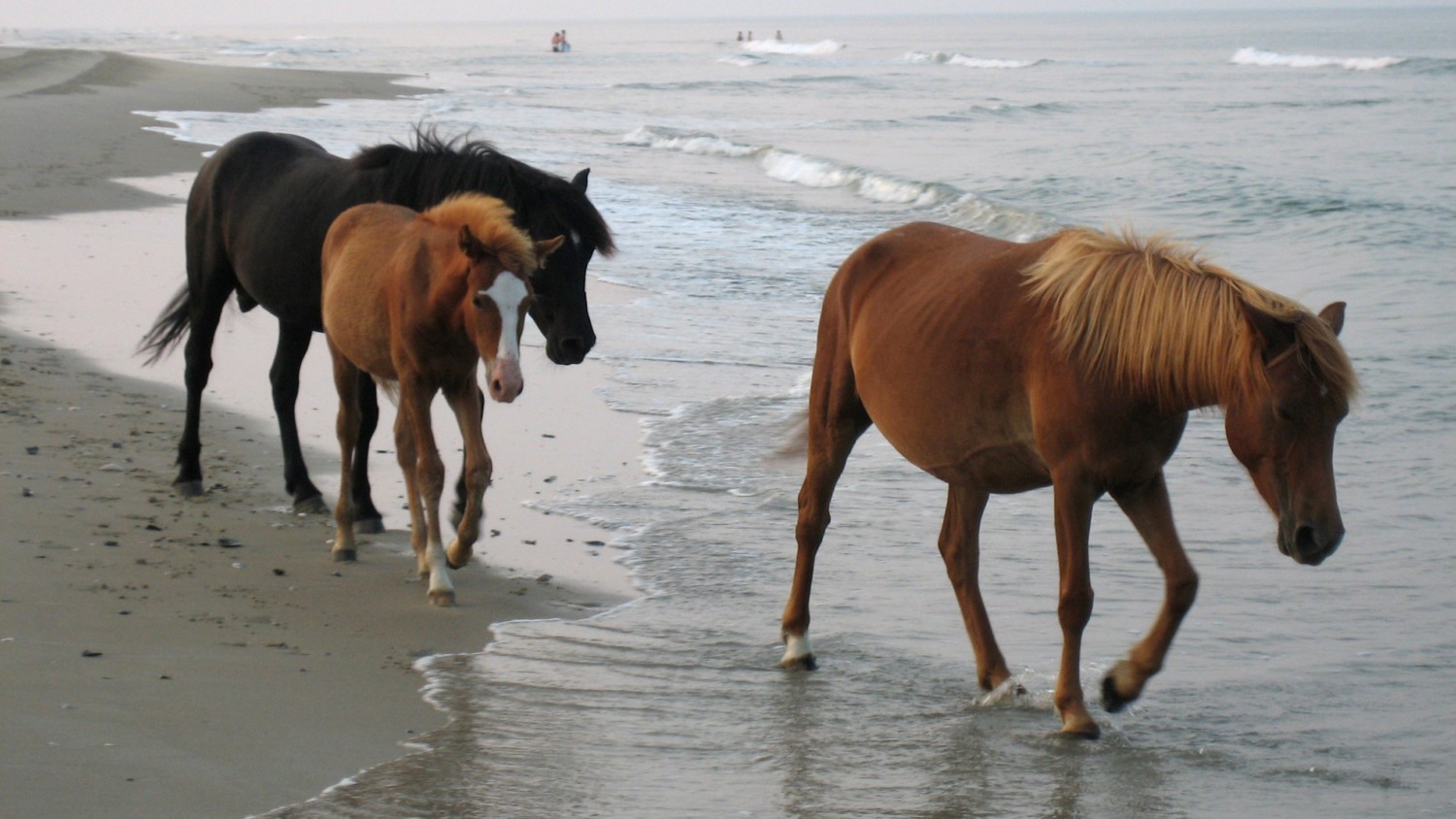
“Remember, they’ve been doing this for 500 years!” the fund said.
In advance of the storm, the horses’ food, water and other supplies had been stocked up at the farm.
They had extra hay and grain, and their troughs were filled with water. They also have ID tags braided into their manes, and the herd manager rode out the storm at the farm with them, the Fund said.
A Facebook post from the fund on Sept. 7 said all ponies from the population at Ocracoke were safe and accounted for.
Hurricane Dorian hit North Carolina as a category 1 storm, damaging homes and businesses, after leaving at least 45 dead and communities shattered in the Bahamas on Sept. 1 when it landed there as a category 5 hurricane.
The Lifestyle of Outer Banks Wild Horses
These wild horses live on the Outer Banks of Virginia and North Carolina, and have done so before the United States of America was born.
Called “bankers,” they come from a time when Spanish explorers colonized areas here in the early 16th century. According to the Corolla Wild Horse Fund, a Spanish colonizer named Lucas Vázquez de Ayllón stole native American children and sent them to be slaves in the West Indies; as a result, the natives rebelled and drove the Spaniards into Florida.
This caused the Spaniards to abandon their horses. Some were caught and raised by native people; others adapted to the local salt marsh lifestyle.
Additionally, shipwrecks of Spanish ships carrying livestock may explain the presence of ponies in Ocracoke. If ships ran aground, the National Park Service notes, animals were thrown overboard to lighten the load. The horses may also have swum ashore themselves after being lost in such incidences. In 1585, a ship belonging to Sir Richard Grenville did get shipwrecked in the region.
But the horses’ habitat dwindled as more people came to settle, and now there are just a few hundred left. One population is at the southern end in Shackleford Banks, and the Corolla horses are on the northern end of the Outer Banks near Virginia. There is still a small population on Ocracoke Island as well.
A brochure about the wild horses on Shackleford Banks says that every attempt is made to keep them wild, and they seek shelter from extreme weather in the live oaks that make up a rare maritime forest and thick shrubs on the north side of the island.
The horses organize themselves into about harems and bachelor bands of male horses. Each harem has a dominant stallion who guards a group of mares and their young.
Because they are wild horses, it is easier to let them remain where they are rather than trying to round them up to remove them from their homes.
The bands of horses are managed by groups such as the Cape Lookout National Seashore and the Foundation for Shackleford Horses, Inc., a non-profit organization, who try monitor populations and intervene when necessary to keep sustainable herd levels. The Spanish mustangs are considered critically endangered by equine groups because of their loss of habitat. However, the U.S. Fish & Wildlife Agency does not consider them a native species, so they receive no special protection.
Visiting The Wild Horses
The horses attract tourists from everywhere. If you would like to visit the Corolla ponies in the north, you can attach yourself to a tour that uses 4WD vehicles.
You can also take a public ferry to see the southern-based Shackleford herd from nearby towns. No vehicles are allowed on that island, so expect some walking!
The ponies on Ocracoke Island can be viewed at the Ocracoke Pony Pen.
Remember, however, that there are rules to viewing these wild animals: you must stay 50 feet away from them at all times. Also, bring bug repellant and binoculars!
Written by Faith Karimi for CNN.
The-CNN-Wire
™ & © 2019 Cable News Network, Inc., a Time Warner Company. All rights reserved.


